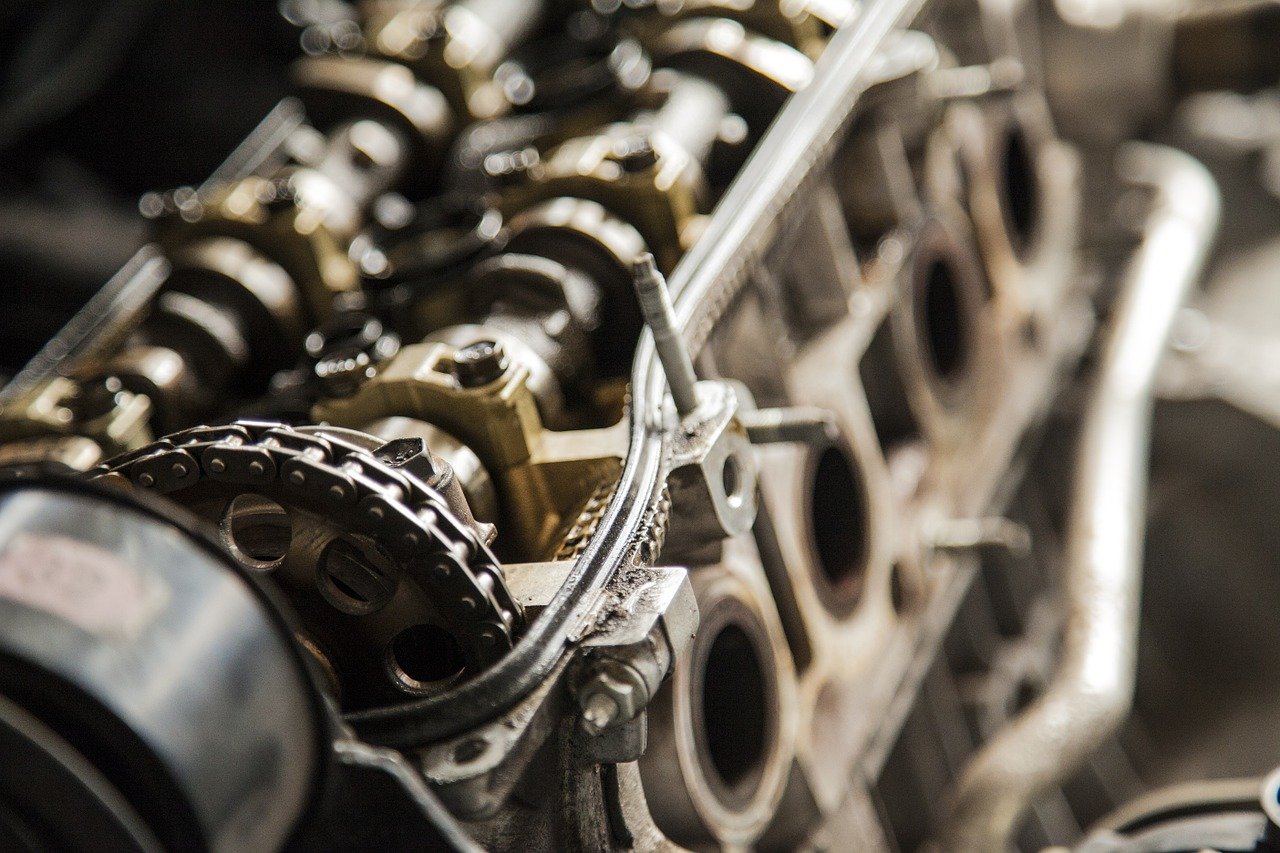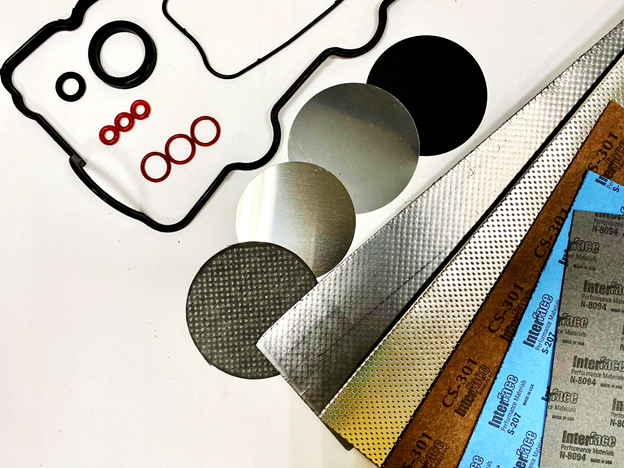- The importance of an exhaust manifold gasket, and why you need to replace a manifold gasket
- What does an exhaust manifold gasket do?
- Signs that an exhaust manifold gasket needs replacing
- How to replace an exhaust manifold gasket
Like any vehicle that uses an internal combustion engine, cars are home to several types of gaskets. Understanding the role of each item, as well as what can happen when they become faulty, is a key responsibility that every mechanic or automotive industry worker must accept. The exhaust manifold gasket is one that should rank very high on your agenda as it is one of the most likely to experience problems.
This guide will provide everything you need to know, from its healthy function to replacing faulty items.
The importance of an exhaust manifold gasket, and why you need to replace a manifold gasket
An exhaust manifold gasket is a mechanical seal that is usually made from multi-layered embossed steel. However, it can be manufactured from high-temperature fiber material, graphite, ceramic composites, and combinations of those materials too.
It is a key component of the vehicle’s engine and serves as an elastomeric component that seals the intersection between two surfaces, in this case, it’s the cylinder head and the manifold unit. In many car engine system’s, only a single exhaust manifold gasket is needed. However, some engines, like a V6 or V8 will require two.
The materials used for other gaskets within the car’s engine system, such as flange gaskets and ring gaskets, are usually matched to the exhaust manifold gasket too. This is something all workers and personnel within the automotive industry should know.
Check out our gasket selection guide : Concise Gasket Material Types For Gasoline And Selection
What does an exhaust manifold gasket do?
As mentioned, the gasket connects the manifold to the cylinder head. In turn, this allows the manifold itself to collect the waste gases and redirect them to the exhaust pipe while simultaneously pulling in new air into the vacuum that’s created by the exiting gas.
In many ways, this can be likened to a person’s lungs and respiratory system. The manifold and cylinder head are ‘breathing’ the gases as they pump out used gas and suck in new air. The exhaust manifold gasket simply encourages a better performance over time by covering the seal and stopping leaks, which can also cause temperature spikes.
The exhaust manifold gasket helps ensure that the car drives more smoothly and with greater power. It is an especially valuable component when the engine needs to work hard. In addition to its direct functions, it’s important to remember that the exhaust manifold gasket is partly responsible for protecting the catalytic converter.m
Signs that an exhaust manifold gasket needs replacing
Faults with the exhaust manifold gasket are usually, although not always, attributed to general wear and tear. As such, it is an issue that tends to impact older vehicles rather than new cars with low mileages.
As with most vehicle faults, regular servicing is a good way to identify potential problems before they escalate or take a toll on other parts of the vehicle. However, you can also tell that the exhaust manifold gasket requires a replacement due to the following symptoms:
#1. Loud noises coming from the engine
The exhaust manifold gasket is responsible for covering the intersection between the cylinder and the manifold unit. So, as soon as a problem surfaces, leakage will occur. The first, and most obvious, sign of this happening comes courtesy of an audible hissing, spitting, or tapping sound.
It is a sound that will worsen if the situation is left untreated. The noise is often most noticeable during acceleration and cold starts, which makes it easier to diagnose the problem when working on a client’s or employee’s vehicle.
While loud noises can be attributed to many car faults, the type of sound and situations that it occurs are clear giveaways.
#2. Reduced fuel efficiency
When a car no longer delivers the miles per gallon ratio that it once did, it’s a clear indication that something isn't quite right. Leaks caused by faulty exhaust manifold gaskets are only of the potential causes. Even so, it is one that is worth investigating, particularly if accompanied by other issues.
The good news is that it’s usually one of the first things that drivers notice. After all, poor fuel efficiency will result in a steep increase in weekly fuel costs. Most people respond to this right away, often by contacting experts like you to identify the issue.
Again the issue will worsen over time. However, it should be noticeable pretty quickly after the faults occur.
#3. Burning smells
A burning smell is another symptom that often surfaces as a result of leaking gas caused by faulty exhaust manifold gaskets. The smells occur because the heat causes other components, such as plastics or engine wiring, to burn and melt. If the burning smells come from the engine bay, the manifold gasket could be the root cause.
Very few drivers, consumers or workers, will ignore burning smells due to their worrying nature. By treating the primary issue quickly, it can reduce the level of damage caused to the other components while also delivering peace of mind.
Burning smells can quite literally lead your nose to the problem too. So, if the exhaust manifold gasket is at fault, it will be found ASAP.
#4. Reduced power or acceleration
A faulty exhaust manifold gasket won’t cause a car to suddenly break down, so there is time to get it fixed. However, it is likely that a noticeable loss in power and acceleration will be felt due to the negative impact that leaking gases have on the engine’s performance and efficiency in virtually all situations.
The symptom may only be noticed when starting the engine at first, but it will soon become more prominent. Aside from not reaching top speeds or getting through the gears as quickly, you may struggle with difficult inclines.
Despite being a relatively easy issue to repair, it can take a lot of time due to rusty nuts and bolts. Early detection is, therefore, considered a key feature for mechanics and drivers alike.
How to replace an exhaust manifold gasket
As a worker in the automotive trade, there are several situations that may require you to repair a gasket. Mechanics may need to complete this job during an annual service on behalf of a client. Likewise, a consumer may have noticed the symptoms mentioned above and need you to diagnose and fix the problem.
Similarly, dealers may need to replace the gasket on a used car that they’ve recently acquired while company owners may have to complete this assignment as a part of servicing their fleet of vehicles. Either way, when the exhaust manifold gasket (or gaskets) need replacement, the process of changing a faulty exhaust manifold gasket is as follows;
Below are replace an exhaust manifold gasket material needed:
- New exhaust manifold gasket kit
- Ratchet wrench
- Impact wrench and sockets
- Coolant container
- Carb cleaner
- WD-40
- Shop rags
- Steel wool and grit sandpaper
Naturally, a flashlight and safety materials like gloves and goggles will be used.
Removing the faulty exhaust gasket
- Remove the battery, making sure to first disconnect the positive and negative cables from any electronic parts.
- Remove the bolts of the engine cover using the ratchet wrenches.
- Gain access to the exhaust manifold gasket by safely removing and disconnecting any items that are obstructing the way. This step will vary greatly from one manufacturer or vehicle to the next.
- Unscrew the bolts at the top or side of the manifold until the heat shield can be safely removed.
- Use WD-40 to lubricate the nuts and bolts of the faulty exhaust manifold, this includes bolts connected to the exhaust pipes.
- Carefully take out the bolts that connect the exhaust manifold and cylinder head with a socket and ratchet. Then remove the manifold from the exhaust pipe.
- With the manifold removed, you should be able to simply slide the exhaust gasket out of place. If it’s stuck to the cylinder head, a scraper will be needed.
Check here for replacing your maniforld gasket: Manifold Gasket & Intake Manifold Gasket Set
Following this, you’ll want to clean the area before moving onto the installation of the new part.
Replacing & Adding the new manifold gasket
- Attach the manifold gasket to the cylinder head studs and apply anti-seize to the studs.
- Add the new gasket, attaching the seal to the bottom of the exhaust manifold and exhaust pipes before attaching the two parts having already used anti-seize.
- Attach the exhaust manifold onto the cylinder head studs.
- Tighten the cylinder head studs in the order advised by the vehicle manual until the manifold sits flash on the cylinder.
- Tighten the exhaust manifold nuts until they reach the necessary pressure levels.
- Re-attach the heat shield, engine covers, coolant lines, and air filters. Refill the radiator.
- Reconnect the battery.
Following this process, you will need to test the engine. Listen for noises and be attentive to poor power and/or burning smells.
The final word for replacing a manifold gasket
Due to the nature of the damage coming from age, there is little point in even attempting to repair the existing items. Thankfully, exhaust manifold gasket kits are an inexpensive purchase while their universal nature means you can keep them stocked without fear of items going to waste.
To learn more about exhaust manifold gasket kits or buy your vehicle repair products today, contact MEGA Gasket today!
CONTACT US This email address is being protected from spambots. You need JavaScript enabled to view it.
 |
Author: MEGA Gasket established since 1979, granted ISO 9002 in 1999 and updated to ISO 9001:2015 in 2017, and the main production is for automobile and all kind of engine gaskets. MEGA have profuse experience and good reputation in Taiwan. Learn more about MEGA Gasket manufacturer and supplier. |





